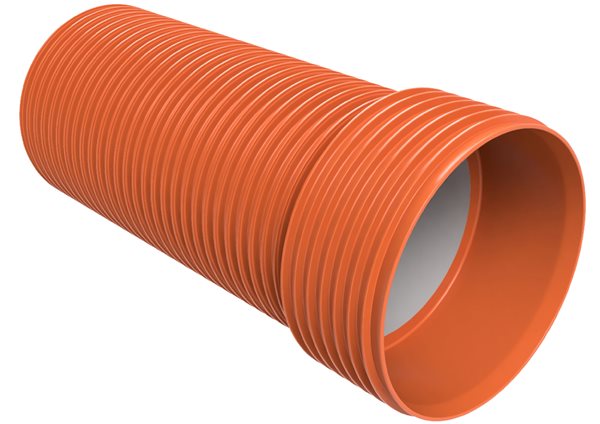Collaboration with Borealis to launch our first product utilising renewable raw material
Becoming a leader in sustainable building and infrastructure solutions requires clear goals, concrete actions and long-term commitment – for instance, committing to the Science Based Targets initiative to keep global warming to 1.5 degrees, and introducing the first product utilising renewable raw materials.
Uponor Infra and Borealis, one of the world’s leading providers of advanced and circular polyolefin solutions, have been collaborating to lead the way for sustainable infrastructure development and recently introduced to markets our first product utilising renewable raw materials – the Ultra Rib 2 Blue sewer pipe.

Following the mass balance model, Ultra Rib 2 Blue is based on Borealis Bornewables™ consisting of over 50% renewable raw material, reducing the carbon footprint by up to 70% and maintaining the same quality and performance than the traditional Ultra Rib 2. The pipes are manufactured at Uponor's ISCC PLUS (International Sustainability & Carbon Certification) certified factory in Fristad, Sweden. As part of this certification, customers receive a sustainability declaration of the amount of renewable raw material in their delivery of Ultra Rib 2 Blue following the mass balance approach.
The reduction in CO2 footprint is achieved by partially replacing fossil feedstock with renewable feedstock, unsuitable for human consumption (waste and residue streams), and traceable back to the first collection points. The chain of custody created by the ISCC PLUS certification makes that Borealis’ Bornewables portfolio and Uponor’s Ultra Rib 2 Blue meet the high sustainability standards of ISCC PLUS.
unsuitable for human consumption (waste and residue streams), and traceable back to the first collection points. The chain of custody created by the ISCC PLUS certification makes that Borealis’ Bornewables portfolio and Uponor’s Ultra Rib 2 Blue meet the high sustainability standards of ISCC PLUS.
"We are pleased to collaborate with Borealis to create a plastic pipe with up to 70% reduction in carbon footprint. We are delivering on our promise to offer the highest quality now in a sustainable product. Our customers can be confident they are making the right decision for the future of our environment," says Sebastian Bondestam, President of Uponor Infra.
Enhancing a more sustainable built environment with our value chain
Our aim is to reduce the use of virgin fossil raw materials. That is why we also participates in a number of standardisation groups to enable wider use of recycled raw materials. Currently, many product standard aspects can prevent the use of recycled materials. The increased use of recycled materials is extremely important in developing a circular business, but it is also important to make sure it does not lead to deterioration of product quality. We are committed to working together with our customers and the whole value chain to further develop the ways in which our products are installed, integrated, used and maintained in the built environment to enable reduction of indirect use-phase emissions. We have a long history of industry-changing product innovations that help our customers become more efficient and sustainable. As an example, for many years all of Uponor Infra’s products have been recyclable or re-usable. Long service life of products is also a major contributor to sustainability: a product design lifetime of over 100 years reduces the environmental impacts of maintenance, repair and replacement works considerably.